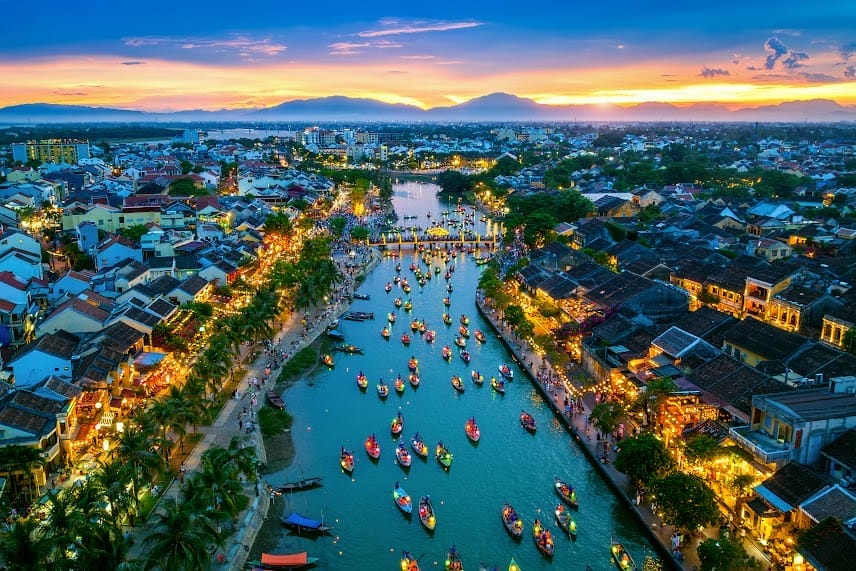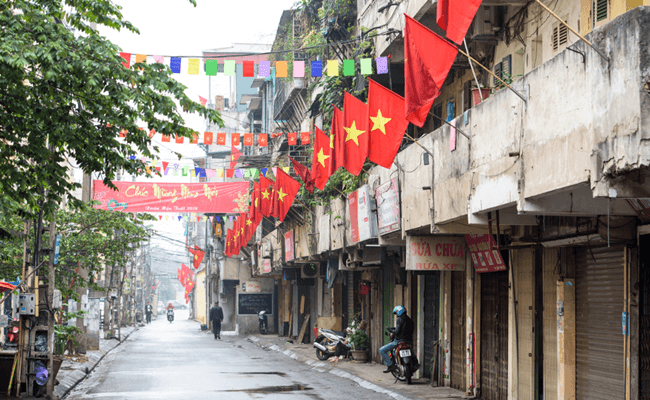The Vinh Moc Tunnels is situated in Vinh Linh Village, Vinh Thach Commune, Vinh Linh District. This site is a place well-known as an underground village constructed to avoid bombardments during the American War (1965-1966). Situated 13km east of the national Highway 1A and just 6km away from the sea, Vinh Moc Tunnels has become a favourite destination for foreign tourists, especially American war veterans. The spectacular tunnel network stands as a testament to the endurance, wisdom and bravery of the local people in their fight for independence. The tunnels used to be thousands of meters long. But now there remain only 1,700m. This underground network is linked with 13 doors (seven opening to the sea and six to the hills). The structure is divided into three layers, the deepest being 23m underground. They are connected by a 768m main axis that is 1.6 to 1.8m high and 1.2 to 1.5m wide. It is linked to the sea by seven exits, which also function as ventilators and to a nearby hill by another six. Along the two sides of the main axis are housing chambers. There is also a large meeting hall with a seating capacity of 50 to 80 people, which was used for meetings, movies, art performances, surgeries, and even the delivery of babies (17 were born here). There are also four air wells, two watch stations and three water wells. The village featured unique Hoang Cam stoves, named after the general who invented the store to allow for underground cooking without emitting smoke, thus evading the discovery by bombers. Before entering the tunnels, visitors are shown the displays of that brutal period in Vietnam’s history by some photos. They provide a sharp contrast for the vitality of the local people in during war time, celebrating on the victory day. The war forced many people to either leave their villages or live beneath the ground. Vinh Moc residents opted for the second solution. A few would imagine that the rubber and pepper tree plantations today used to be a fierce battleground from 1966-1972 when Vinh Moc was a place to pass food and ammunitions to Con Co Island. The area underwent tens of thousands of tonnes of bombs by U.S warplanes. The invaders wanted to return the area to the “stone age” and launched a destructive war there. It was estimated that local residents endured the equivalent of 500 heavy rockets per day.
You May Also Like
Top Travel Routes During Tet in Vietnam | Best Tet Holiday Destinations
The top travel routes to explore during the Tet holiday in Vietnam. Experience the vibrant Lunar New Year celebrations with…
Best Ways to Travel During Tet in Vietnam
The best ways to travel during Tet, Vietnam’s Lunar New Year. Learn about transportation options, cultural experiences, and essential travel…
Must-See Local Events During Tet: Experience the Magic of Lunar New Year in Vietnam
Discover the must-see local events during Tet holiday in Vietnam. From vibrant parades to cultural festivals, explore the highlights of…
Must-Visit Tet Destinations in Vietnam
Here are must-visit Tet destinations in Vietnam for an unforgettable Lunar New Year experience. Explore top cities, festivals, and cultural…
What Are the Top Tet Festivals to Experience in Vietnam During the Lunar New Year?
The top Tet festivals in Vietnam during the Tet holiday. Explore traditional events, festivals, and celebrations, including insights into travelling…
Best Time to Travel During Tet Holiday in Vietnam: A Complete Guide
The best time to travel during the Tet holiday in Vietnam. Whether before, during, or after Lunar New Year, learn…






